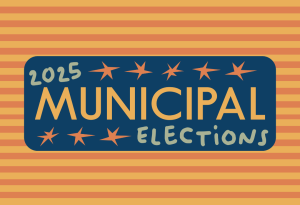N.C. Political History
November 2, 2020
History and Background
North Carolina is a swing state. The state has 15 electoral college votes but uses a “winner take all” electoral college system, which means the majority-party vote gets all the delegates.
In recent presidential elections, North Carolina has voted Republican. In the last 10 presidential elections, the state only went blue once — in 2008, for Barack Obama.
It is one of only two states that switched parties in the 2012 election. North Carolina has historically been decided by less than 10% for presidential elections, and in recent years, the margin has gotten as low as 3%.
In contrast to presidential elections, seven of the last 10 North Carolina governors have been Democrats. The current governor, Roy Cooper, is a Democrat in stark contrast to the legislature, which has been majority-Republican for the last 10 years.
Budget Crisis
Most of the current political issues in recent years are due to a lack of compromise and cooperation between the two parties in North Carolina; specifically, between the legislature and governor.
The Republicans held a supermajority in the General Assembly of North Carolina until 2018. With the loss of the supermajority, Republicans couldn’t override the governor’s budget proposal.
Instead of compromising for the 2019 budget Gov. Cooper proposed, the House Republicans rushed an override vote while Democrats were absent. Since then, the budget has been in limbo in the Senate. The Democrats will not approve it, and the Republicans do not have the votes to override it.
This event made national news at the time. There was legal controversy over the budget fiasco, because a Senate rule requires all legislature members to receive 24-hour notice before a vote.
Gerrymandering
North Carolina has a bad reputation for gerrymandering. Gerrymandering is the process of drawing voting districts to favor one party over the other.
Gerrymandering in the state started as a move to give Black voters representation in Congress but led to some of the worst gerrymandering in the nation.
After the 1990 Census, the State Legislature created majority-minority districts to give minorities representation. These were districts designed specifically to give Black voters a majority.
The North Carolina House of Representatives drew lines to include enough Black voters in one district to give them enough voting power to elect a Black representative in Congress. The North Carolina 1st voter District elected Eva Clayton in 1992, the first time a Black person was elected as a representative in North Carolina since 1898.
Although, Republicans saw this as an opportunity to pack together more Democratic voters in fewer districts overall. This created opportunities for more North Carolina Republicans in Congress. So while the Black community got some representation, it was overshadowed by the increase in total Republican representation.
Gerrymandering was taken a step farther after the 2010 census. The Republican Party created the Republican State Leadership Committee to aid the Republican party in gaining state legislature across the country, intending to redraw voter directs.
This project was called REDMAP (2010), or the Redistricting Majority Project. With widespread partisan gerrymandering, nationally, the Republican party gained the majority in the House of Representatives in 2011, and in the Senate in 2015. Since the 2010 census, the Republican party has had the majority in North Carolina in both the Senate and House.
Although, there has been judicial pushback to the legality of some voting districts in North Carolina. Supreme Court case Cooper v. Harris (2017) determined Districts 1 and 12 were deemed illegally racially gerrymandered. Common Cause v. Rucho (2018), a 3-judge panel of the United States District Court for the Middle District of North Carolina, determined that the North Carolina congressional district map was illegal partisan gerrymandering.
These courts ordered North Carolina State Legislators to redraw the districts after the November 6, 2018 election cycle. A new district map was drawn and passed through both the House and Senate in 2019.
This vote was along party lines, though, with all Republicans voting in favor, and all Democrats voting against.
North Carolina should be more competitive for the State Legislative positions. The Republican majority does not reflect the voter data for North Carolina. North Carolina has a majority of registered Democratic voters.
Even if all the unaffiliated voters vote Republican, registered Democrats still hold a slight majority in North Carolina. There hasn’t been a reflection of this in the State Legislature for over 10 years.
Partisan gerrymandering can prevent competition. Instead of letting the voters choose the candidates, the Republicans have gotten in a habit of choosing their voters.











